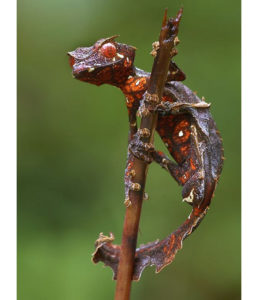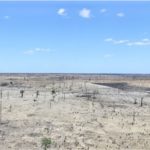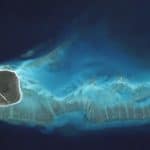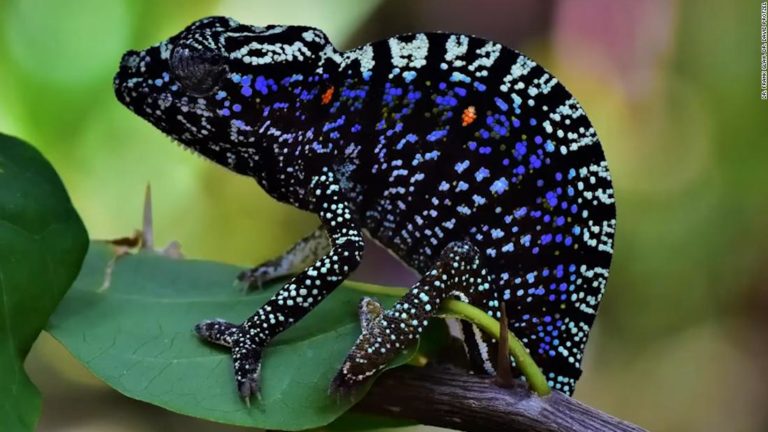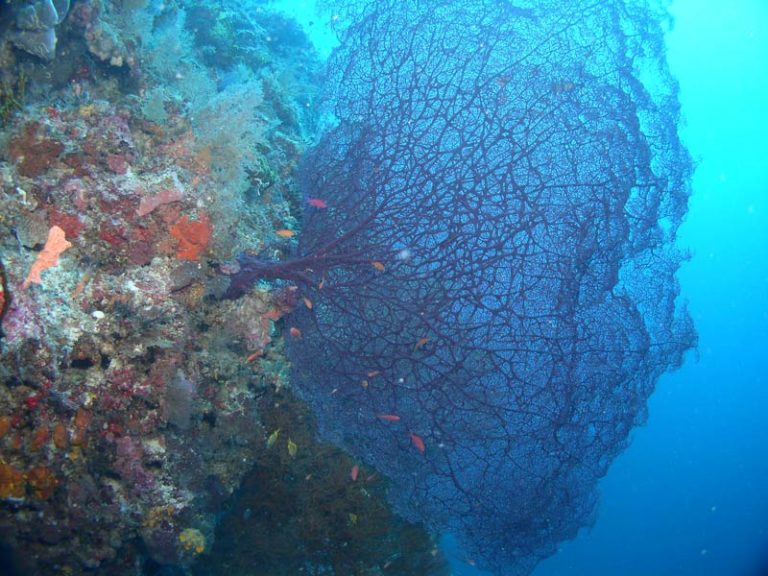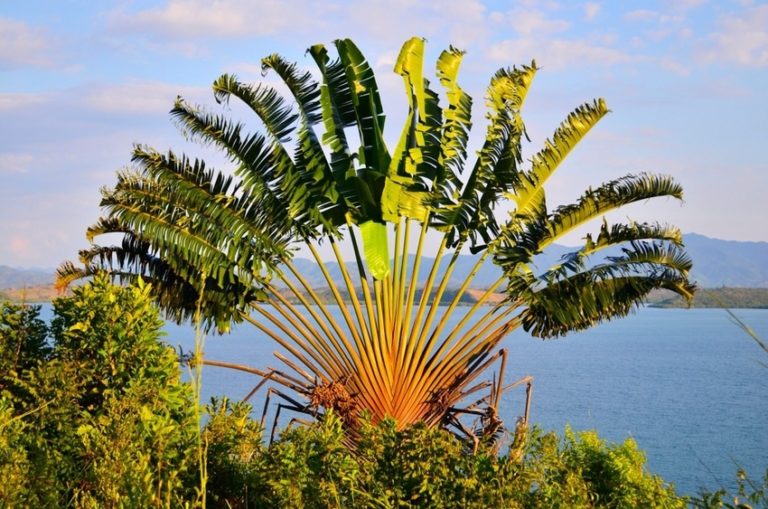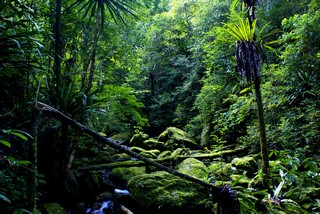THE GECKOS AND UROPLATYS FROM MADAGASCAR
Geckos in Madagascar are much larger, stranger and more colorful than those in other tropical regions, where they are usually small animals, recognizable by their loud noises and habit of galloping through houses at night.
In Madagascar there are about sixty species of geckos.
Most geckos, the only lizards with a developed voice, are nocturnal. The daytime bright green gecko of the genus Phelsuma is an exception to the rule.
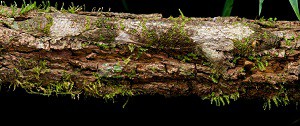
In the family of geckos two genera occupy a special place:
The highly specialized, flattened uroplatys that perfectly mimic lichen-covered bark are extremely difficult to see when immobile upside down on a log or vine, mimetism.
The largest species (20 cm) is Uroplatus fimbriatus (tana-fisaka), of which Flacourt excessively claimed in 1658 that 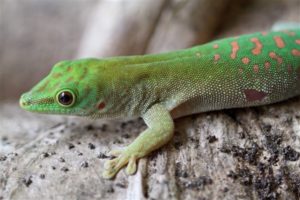 its fingers adhere so strongly to the skin of a human that it can only be separated from it by cutting off the piece of skin to which the animal has attached itself with a razor.
its fingers adhere so strongly to the skin of a human that it can only be separated from it by cutting off the piece of skin to which the animal has attached itself with a razor.
Phelsumen are beautiful geckos, often bright green with red, yellow or white punctuations or lines. Many species have been differentiated in all regions of the island. Although typically arboreal, some species have adapted to life on rocks in the mountains.
The geckos of Madagascar
More than 80 known gecko species are known in Madagascar.
Geckos, or animals that never sleep or at least have their eyes open all the time, are also part of the rich fauna of our island.
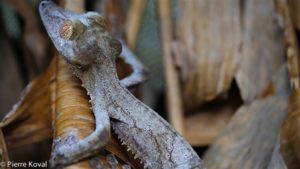 The geckos of Madagascar all belong to the Gekkonidae family. These animals, thanks to their sticky pads, are very good climbers, able to cling to any type of surface.
The geckos of Madagascar all belong to the Gekkonidae family. These animals, thanks to their sticky pads, are very good climbers, able to cling to any type of surface.
Most geckos of Madagascar are nocturnal, with the exception of those belonging to the genus Phelsuma.
Chameleons are best known for their camouflage, but geckos are no less famous; in Madagascar, geckos literally blend into the landscape, taking on the color of their natural habitat.
Geckos are also among the most sought after by the great lovers of NAC (new pets). Among the most famous are the genus Phelsuma with its bright green colors, including the Phelsuma Grandis or the Green Giant Gecko of Madagascar.
Just over 80 species of gecko have been recorded in Madagascar, many of which are endemic. The genera Paroedura, Phelsuma and Uroplatus are the most represented.
The different gecko species in Madagascar:
The genus Blaesodactylus
The genus Blaesodactylus includes 04 species, all endemic to Madagascar.
Blaesodactylus ambonihazo
Blaesodactylus ambonihazo has been an independent species since 2011, after having been placed in the genus Blaesodactylus antongilensis was recorded.
The Blaesodactylus Ambonihazo is a gecko of the genus Blaesodactylus or flat-tailed gecko. It is endemic to the northwestern region of Madagascar. The word "ambonihazo" means sitting on trees in the Malagasy language.
Blaesodactylus Ambonihazo was elevated to species status only in 2011, after long being considered a subspecies of Blaesodactylus Antongilensis.
Identification
The Blaesodactylus Ambonihazo has an elongated appearance. It has a light dark green-brown color with white patterns all over the body, which turn into stripes on the tail.
Locations
Blaesodactylus Ambonihazo lives in the Ankarafantsika National Park, the only place where it can be seen with certainty. It is also reported of its presence in some corners of the Ankarafantsika area, but it is almost impossible to find it, as near the Lake Ravelobe and near Bemaraha.
NP: Ankarafantsika
Blaesodactylus Antongilensis
Blaesodactylus Antongilensis is a gecko of the genus Blaesodactylus, all of which are endemic to Madagascar. It was discovered near the bay of Antongil.

Identification
The Blaesodactylus Antongilensis has an elongated appearance. It has a dark brown color with white patterns all over the body, which turn into stripes on the tail.
Locations
The location of Blaesodactylus Antongilensis is not restricted to the Antongil Bay but also to a large part of the northeast of Madagascar.
It is within the Marojejy National Parks clearly visible. It is also present on the island of Nosy Mangabe.
Blaesodactylus Boivini
The Madagascar Velvet Gecko or Blaesodactylus Boivini is a gecko of the genus Blaesodactylus that is endemic to Madagascar.

Identification
The Blaesodactylus Boivini has an elongated appearance. It has white patterns all over the body, which turn into stripes on the tail.
Locations
The Blaesodactylus Boivini lives in the north of Madagascar. It can be found in different places, among others in Ankarana, on the various islands of the Diana region, in the reserves of the Montagne d'Ambre and Sahamalaza as well as on the Montagne des Français.
Conservations
NP: Montagne d'Ambre
Blaesodactylus Sakalava
The Giant velvet gecko from Madagascar with the scientific name Blaesodactylus Sakalava is a gecko of the genus Blaesodactylus endemic to Madagascar.

Note that the word "Sakalava" corresponds to an ethnic group of the same name living in the range of Blaesodactylus Sakalava.
Identification
Blaesodactylus Sakalava has an elongated appearance with a very thin tail.
It is quite massive, with a rather broad head, its color varies between light brown and dark gray, with white spots and black dots all over the body. The adult can reach 25 cm.
In appearance it is of a different kind, Blaesodactylus Boivini, very similar, but smaller in size.
Standards
Blaesodactylus Sakalava is found throughout western and southwestern Madagascar, but strangely it lives mostly outside of protected areas.
The genus: Ebenavia
The genus Ebenavia has only two species, only one of which is endemic to Madagascar. Ebenavia is nocturnal and arboreal.
Ebenavia inunguis
The Nailless Gecko, or Ebenavia inunguis, is a gecko a little less than 8 inches long that easily hides in the landscape with its ochre and striped color.
It is not endemic, in fact Madagascar shares it with the surrounding islands. It belongs to the genus Ebenavia.
Identification
The gecko Ebenavia inunguis is comfortable both on the ground and in trees. It is mainly 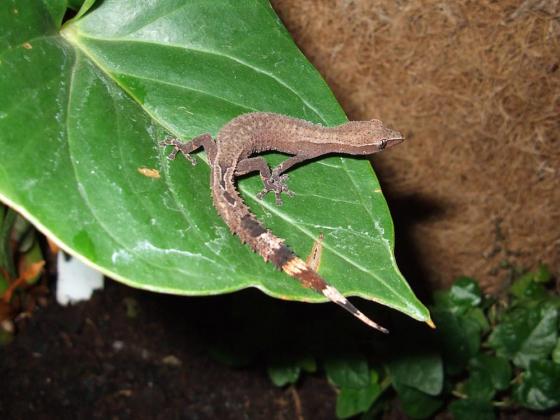
The gecko Ebenavia inunguis is most recognizable by its slender triangular head, marked by a clear horizontal line and extended by a broader body and stout tail.
The back is light ocher and the legs are darker.
A type of separating rib, which may have a thin line of spines, is present on each side of the body. The length and location of this vein varies from region to region.
Locations
The gecko Ebenavia inunguis is more widespread in eastern Madagascar. Its largest range is between the protected area of Tampolo in the north and Andohahela in the south.
Then you can find them on the Ampasindava Peninsula in the west of Madagascar, on the Masoala Peninsula, at the northern tip of Madagascar and on the islands of Sainte-Marie and Nosy-be.
Outside Madagascar, it is found on Mauritius, Mayotte and the Zanzibar archipelago. However, it seems that this animal was introduced on these islands. In this case, the Ebenavia inunguis would be entirely native to Madagascar.
Conservations
RNI: Zahamena
NP: Zahamena, Mantadia, Ranomafana, South Midongy, Andohahela
RS: Nosy Mangabe, Lokobe.
Ebenavia maintimainty
Ebenavia maintimainty is primarily the endemic species of Madagascar from the Tsimanampetsotsa Reserve. The word "maintimainty" literally means "black" in Malagasy.
It is located in a small area of limestone cliffs east of the Lake Tsimanampetsotsa on the Mahafaly Plateau.
The genus: Geckolepis
The genus Geckolepis includes three species, two of which are endemic to Madagascar and one that it shares with the Comoros archipelago.
They are nocturnal animals.
Geckolepis maculata
The gecko Geckolepis maculata is a nocturnal and arboreal gecko that belongs to the genus Geckolepis and is widely distributed in several coastal areas in western Madagascar.
Features
The gecko Geckolepis maculata is quite large and massive, measuring about 15 cm. It is decorated with well visible 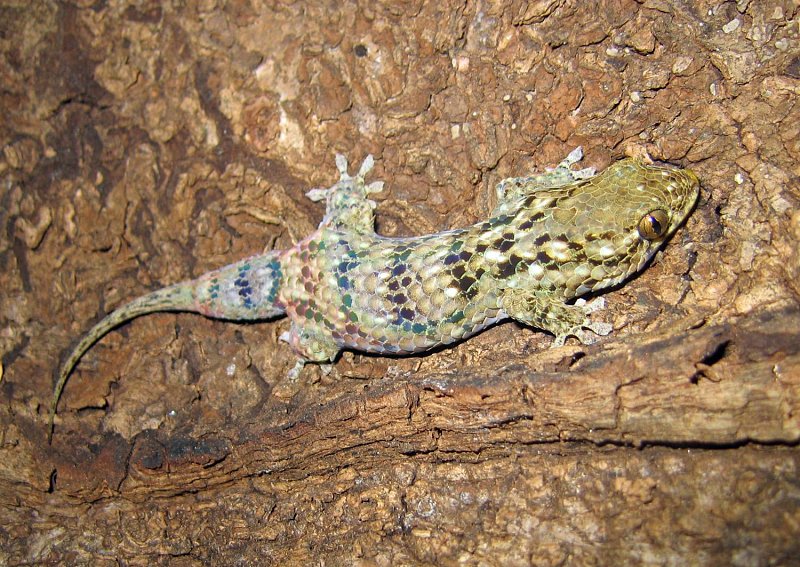
Its body is covered with small black stripes and spots on a general creamy brown background. Its large eyes are light brown and have a black pupil that is vertically elongated.
Locations
The gecko Geckolepis maculata is found in several coastal areas in western Madagascar:
On the coastal strip between the city of Tuléar in the south and the city of Belo-sur-Tsiribihina in the north, in the southwest of Madagascar.
On the coastal strip between Cap Saint-André in the south and the Sahamalaza National Park – Radama Islands in the north, in the northeast of Madagascar, within the Marojejy National Parkswhich extends inland to Ankarafantsika extends, in a small area around the Tolagnaro city in the southeast of Madagascar and finally on the Nosy-be island.
Outside Madagascar, the gecko Geckolepis maculata is also present in the Comoros archipelago.
Conservations
NP: Andohahela, Bay of Baly, Ankarafantsika, Marojejy, Amber Mountains
RS: Lokobe
Geckolepis polylepis
The gecko Geckolepis polylepis is a gecko endemic to Madagascar, belonging to the genus Geckolepis.
Features
The gecko Geckolepis polylepis is nocturnal. It has a cream-colored, scaly skin with several darker, 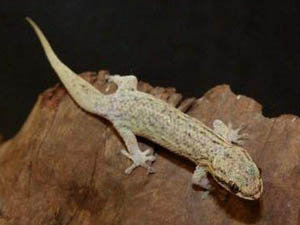
Locations
The gecko Geckolepis polylepis is found in three different areas:
at a coastal strip in the northwest of Madagascar, near the National Parks Bay of Baly and of the Mahavavy - Kinkony Wetland.
in an area north of the Morondava city, including the Andranomena Special Reserve.
and finally on the Sainte-Marie Island…
Conservations
NP: Bay of Baly
RS: Andranomena
Geckolepis typica
Geckolepis typica, also found in some documents under the name Geckolepis petiti, is a species widely distributed throughout the western part of Madagascar.
The genus Gehyra
The genus Gehyra includes more than forty species distributed throughout the world, but only one is represented in Madagascar, Gehyra mutilata.
Gehyra mutilata
Gehyra mutilata is a species found on the African, Asian and Australian continents, but also in Madagascar.
Description
Head longer than broad; snout longer than distance between eye and ear opening, about 1.3 times diameter of orbit; forehead with a median groove; ear opening moderately large, suboval.
Body and limbs moderately elongate, depressed, a fold of skin bordering the hind limbs posteriorly.
Fingers short, more or less webbed at base; lower lamellae angular, divided by a median groove.
Upper side and throat covered with small granular scales, largest and flattest on back. Ventral scales moderate. Rostral quadrangular, broader than deep, with a median cleft above; nostril pierced between rostral plane, first lip, and three nostrils, the upper one much larger and generally in contact with its conspecifics
Behavior
Like many other geckos, it is very adaptable to its environment, although it usually prefers forests, rocky areas, and human dwellings.
The genus Hemidactylus
The genus Hemidactylus includes more than 50 species distributed throughout the world. Four Hemidactylus species are recorded in Madagascar.
Hemidactylus mabouia
Hemidactylus mabouia is a domestic gecko. In the West Indies they are called house geckos. They are found on the American continent and on the African continent.
Habitat
In their original range, the habitat of tropical house geckos was restricted to the 
They are commonly found in urban and suburban areas - as their common name suggests, they also often live inside houses.
They can live very close to sea level (5 meters) up to altitudes of 1600 meters.
Description
Tropical domestic geckos have a slender body and a flat head that is wider than their neck. Most of their bodies are covered with black/brown bands, but the geckos also have the ability to change color depending on temperature and light.
Their colors can range from dark brown to a gray almost white. Tropical house geckos also have dorsal scales and have tubers that are in rows on their body.
On the tops of their toes are lamellae, which are the spine-like scales that help geckos cling to vertical surfaces.
Behavior
Tropical house geckos are arboreal and their toe pads allow them to climb excellently. They are quite sedentary creatures.

Female geckos beat their tails more often than males. In male-male and female-female interactions, the animals tended to bite more, arch their backs, and flick their tongues. On the other hand, males and females would have increased rates of tail wagging in male-male interactions.
Tropical house geckos are a nocturnal species that uses artificial light sources for hunting. They eat insects. As territorial geckos, they can be aggressive.
In a feeding study, juveniles in urban areas were located closer to the ground, while adult males were higher up (on buildings). It was suspected that this was a case of aggression avoidance by juveniles.
This also changed the diet of the juveniles, which feed more on ground-dwelling insects.
Hemidactylus frenatus
Hemidactylus frenatus, this large mosquito and ant hunter of the houses, is present in almost all countries of the southern hemisphere and also in Madagascar.
Hemidactylus mercatorius
Hemidactylus mercatorius is a gecko from the African continent and Indian Ocean islands. But the largest number of them is found in Madagascar.
Hemidactylus platycephalus
Hemidactylus platycephalus is a species very similar to Hemidactylus frenatus. It is also found on the African continent
The genus: Lygodactylus
The genus Lygodactylus includes about 30 species distributed in sub-Saharan Africa and Indian Ocean islands, including about 20 endemic to Madagascar (of the 22 listed).
They are small, diurnal geckos.
Lygodactylus arnoulti
The gecko Lygodactylus arnoulti is an earth gecko that lives in the regions of Haute Matsiatra and Amoron'i Mania, more precisely in the massifs of Ibity and Itremo, in the village Ambatofinandrahana is endemic to the southern part of the Malagasy highlands.

Features
The Pasteur's dwarf gecko has a stocky and large body. Its skin is gray with short dark horizontal stripes. It has a head with a short, rounded snout.
Conservations
NAP: Ibity (in progress)
Lygodactylus bivittis
The tiny gecko Lygodactylus bivittis is a gecko endemic to eastern and northeastern Madagascar, living in the highlands between 300 and 1000 m above sea level.
The gecko Lygodactylus bivittis is classified as "susceptible" and belongs to the genus Lygodactylus.
Features
The gecko Lygodactylus bivittis is a day gecko that lives in trees. It is gray colored, with dark stripes on 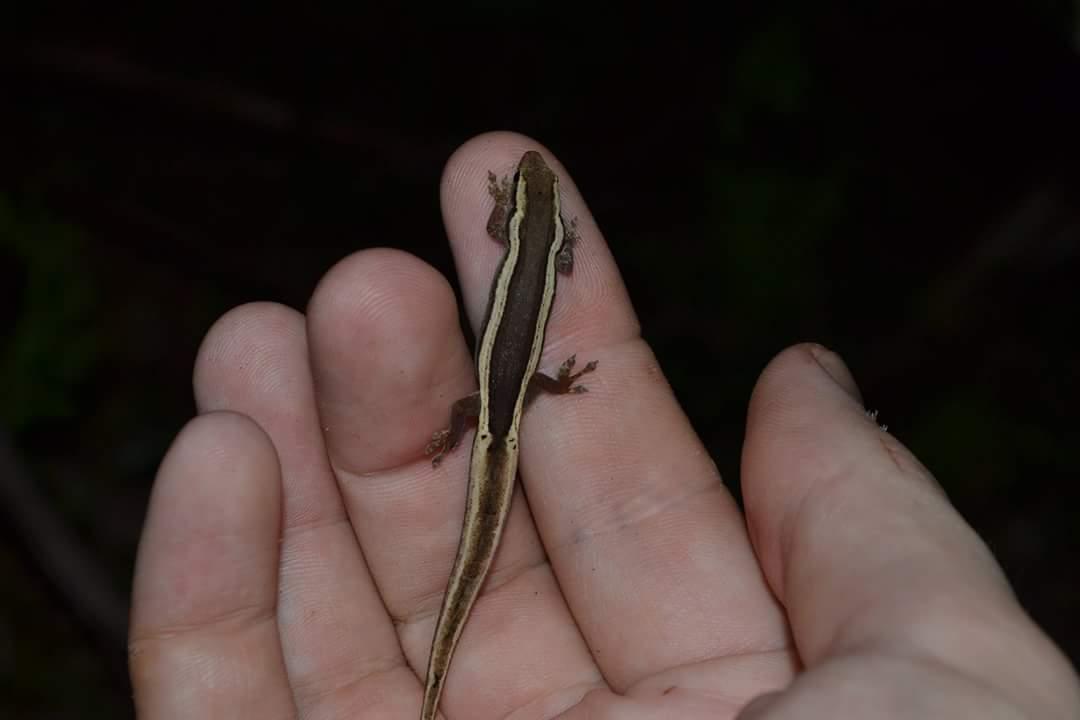
Location
The gecko Lygodactylus bivittis lives in the eastern and northeastern parts of Madagascar. Its range is between the Marojejy National Park in the north and the Mantadia National Park in the south.
Nature Conservation
NP: Marojejy, Mantadia
RS: Analamazaotra
NAP: Makira
Lygodactylus blancae
The gecko Lygodactylus blancae is a gecko found in the Itasy region endemic, especially in an unprotected area barely 70 km2 west of the Itasy Lakes lies.
The gecko Lygodactylus blancae is classified as "near threatened" and belongs to the genus Lygodactylus.
It was named after the French Biologist Françoise Blanc who lived in Madagascar for a long time and conducted several researches on Malagasy fauna.
Features
The gecko Lygodactylus blancae is a day gecko that lives in trees. They especially love fig trees. But it can also be found on rocky ground around swamps and rivers.
The gecko Lygodactylus blancae is gray and cream on the back and yellowish on the belly. There are also black spots on the throat that seem to form irregular horizontal lines. On the other hand, the tail is buzzed.
Lygodactylus decaryi
Lygodactylus decaryi is a gecko endemic to the southeastern part of Madagascar. It is the gecko of the Angavo massif. It was named after the Researcher Raymond Decaryi named
Lygodactylus expectatus
Lygodactylus expectatus is endemic to northern Madagascar. It occupies a small territory in the Special reserve of Ankarana one.
Lygodactylus guibei
Lygodactylus guibei was found after Jean Marius René Guibé, a French naturalist and herpetologist. It is an endemic species of Madagascar, found mainly in Analamazaotra and Ambohitantely occurs.
Lygodactylus heterurus
Lygodactylus heterurus is a species endemic to Madagascar. It occurs mainly in the north of the island and exceptionally in the Nature reserve of Bemaraha before.
Lygodactylus intermedius
Lygodactylus intermedius is a gecko endemic to Madagascar, found in a territory of slightly more than 300 km² in the Andringitra Massif occurs.
Lygodactylus klemmeri
The Dwarf gecko from Madagascar or Lygodactylus klemmeri is a species endemic to Madagascar, found in the heart of the Tsingy from Bemaraha lives. She was born after the Naturalist Konrad Klemmer named
Lygodactylus klemmeri Pasteur, 1964 is a small diurnal geconid lizard described from a single male specimen from the Antsingy Forest in western Madagascar.
Description
Lygodactylus klemmeri is classified as a member of the Group L. verticillatus, as defined above, characterized by its distinct swirling tail.
He unte
L. blancae and L. heterurus also show black stripes on the throat, but these are present only in some specimens and then rather diffuse in L. blancae (vs. always present and very distinct in L. klemmeri), and they are longitudinal, following the body axis, in L. heterurus (vs. slightly diagonal, directed toward the middle of the throat in L. klemmeri).
In addition, in L. klemmeri the ventral color of the throat is often at least slightly yellowish in life, whereas in L. heterurus no ventral yellow color is known.
Another species with black lines on the throat that is not assigned here to the L. verticillatus group is L. ornatus; in this species the throat lines are transverse, and L. ornatus is further distinguished by the non-serrated tail.
L. klemmeri further differs from L. decaryi by a smaller number of preanal pores in males
Lygodactylus madagascariensis
Lygodactylus madagascariensis is an endemic species of northern Madagascar. It has two subspecies: Lygodactylus madagascariensis and Lygodactylus madagascariensis petteri.
Lygodactylus miops
Lygodactylus miops is a species endemic to Madagascar, occurring throughout the eastern part of the island.
Lygodactylus mirabilis
Lygodactylus mirabilis is an endemic species that occurs only in the Ankaratra Massif and occupies a very small territory.
Lygodactylus montanus
Lygodactylus montanus is a species endemic to Madagascar. It is mainly found in the Andohahela National Park to find.
Lygodactylus ornatus
Lygodactylus ornatus is a gecko endemic to Madagascar, found in a very small area near Mandritsara in the Sofia region occurs.
Lygodactylus pauliani
Lygodactylus pauliani is an endemic species living on a small territory in central Madagascar. It was named after the French Naturalist Renaud Paulian named
Lygodactylus pictus
The Robust dwarf gecko or Lygodactylus pictus is an endemic species of the forest corridor in southeastern Madagascar.
Description
L. pictus is a relatively large species of Lygodactylus distributed on the central plateau of Madagascar. 
It is distinguished from L. tuberosus by distinct dark spots on the throat (as opposed to no or faint spots in L. tuberosus), yellow ventral coloration in life (usually whitish and not distinctly yellow in L. tuberosus), and the presence of only one dark stripe behind the eye (as opposed to a dark marking behind the eye containing spiny scales in most individuals).
Typically, specimens of L. pictus are relatively large, but some individuals classified as L. tuberosus can also reach large sizes (up to 38 mm).
Clearly, the definitions of these species need to be revised, and the specimens assigned here to either L. pictus or L. tuberosus do not form homogeneous groups.
Lygodactylus rarus
Lygodactylus rarus is a species endemic to Madagascar, found only on the Ankarana Massif can be seen.
Lygodactylus roavolana
Lygodactylus roavolana is an endangered species endemic to Madagascar. It lives in the southeast, especially in Andohahela. Literally, "roa volana" means two months in Madagascar.
Lygodactylus tolampyae
Lygodactylus tolampyae is a species endemic to Madagascar, seen throughout the western part of the island. It is particularly remarkable thanks to the "V" shaped lines all over its body.
Lygodactylus tuberosus
Lygodactylus tuberosus is a species endemic to Madagascar. It lives in the southwest of the island.
Lygodactylus verticillatus
Lygodactylus verticillatus is a species endemic to the Indian Ocean. It lives in the extreme southwest. It is also found on the scattered islands to find.
The genus: Matoatoa
The word "Matoatoa" means "ghosts" in Malagasy. And indeed, the sight of these animals, especially when they move, can make you shiver.
The genus Matoatoa consists of two species, all endemic to Madagascar. They are very small animals.
Matoatoa brevipes
The Matoatoa brevipes is a brown-gray gecko with a very elongated tail. It is visible over a large area in the southwest of Madagascar.
Matoatoa spannringi
The Matoatoa spannringi is after Jürgen clamping ring named. He lives in a small town in the south called Fiadanana.
The genus Paragehyra
The genus Paragehyra includes two species, all endemic to Madagascar. This genus was first described in 1929.
Paragehyra gabriellae
The Paragehyra gabriellae is a gecko named after Gabriella Raharimanana. This animal is endemic to a small locality in southeastern Madagascar, including the Andohahela Reserve.
Calumma petiti
The Calumma petiti is a gecko endemic to a forest in southwestern Madagascar near the village of Lavenombato. It has been reported about its presence in the Bemaraha Reserve reported, but it seems to have died out at this location.
The genus Paroedura
The genus Paroedura includes 17 species endemic to the Indian Ocean, 14 of which are endemic to Madagascar.
The genus Paroedura is nocturnal and arboreal.
The two species that are not Malagasy ps of the genus Paroedura but are found in the Comoros archipelago are Paroedura sanctijohannis and Paroedura stellata.
Paroedura androyensis
The Paroedura androyensis, sometimes called "Panther Gecko", is the smallest but also the most famous gecko of the genus Paroedura. Indeed, it can be exported very easily and is very appreciated by lovers of NAC or new pets.
As its name suggests, the Paroedura androyensis is found in the Androy region and surroundings in the south of Madagascar endemic.
Grandidier was the first to describe it in the 1860s. This gave her the other name "Le Paroedura de Grandidier" or "le Gecko pygmée de Grandidier". It is also classified as "vulnerable".
Description
As an adult, the gecko Paroedura androyensis is only about 7 cm long. Males are generally smaller than females, both in size and length.
The predominant color is brown or gray-brown, with patterns similar to those of panthers, with a mixture of lighter and darker patterns, hence the nickname. On the other hand, the lower part is light, with only a few spots on the neck.
This nocturnal animal lives on the ground and usually seeks refuge under roots and trees. It is very agile and has no problems climbing trees. It usually stands on its legs, a few millimeters above the ground.
The gecko Paroedura androyensisl feeds mainly on insects.
Location
The gecko Paroedura androyensis is only visible in the south of Madagascar.
Its range consists of a coastal strip between the cities of Tuléar in the west and Fort-Dauphin in the east.
Conservations
NP: Andohahela, Zombitse
Paroedura bastardi
The Paroedura Bastardi is a gecko that belongs to the genus Paroedura and is found in Madagascar, especially in two regions of the island, the Bemaraha Nature Reserve and the Ankarana Reserve, is endemic.

His other name, Paroedura guibei, when some people were not integrated into the same group, is in honor of the Herpetologist Jean René Guibei.
Identification
The Paroedura bastardi is a compact gecko with triangular head, which is marbled gray, brown or pink. The skin is decorated with two stripes bordered by black spots.
It also has numerous dorsal tubercles arranged in rows, giving the animal a spiny appearance. The Bastardi Gecko Paroedura bastardi also has large copper eyes with vertical pupils.
Location
The gecko Paroedura bastardi occupies a very wide coastal strip in the east and south of Madagascar. Its range is defined by the Wetland Cap Saint-André in the southwest of Madagascar to Andohahela in the southeast of Madagascar.
They are mainly found in dry forests and rocky reliefs and live on the ground.
Conservations
NRT: Bemaraha
NP: Tsimanampetsotsa, Andohahela, Bemaraha, Mikea, Kirindy Mitea
RS: Bemarivo, Andranomena
Paroedura gracilis
Paroedura gracilis is a gecko belonging to the genus Paroedura, endemic to Madagascar, especially in the humid and semi-humid forests of the northeastern part of the island.
Description
The Paroedura gracilis is a gecko of predominantly brown or gray color, with distinct dark lines that are 
Paroedura gracilis is a gecko that spends most of its time on the ground. However, it is also very comfortable in trees.
It is usually a nocturnal animal, but can also hunt during the day. It feeds mainly on insects.
Location
The gecko Paroedura gracilis occupies a large coastal area in northeastern Madagascar, except for low-lying areas.
Its range extends from the Surroundings of Brickaville in the south to the Masoala Peninsula in the north. Exceptionally, it is also in the National Park Amber Mountains in the north of Madagascar.
Conservations
NP: Andasibe, Marojejy, Masoala, Amber Mountains
RS: South Anjanaharibe, Manongarivo, Nosy Mangabe
Other: Tampolo
Paroedura homalorhina
The Paroedura Homalorhina is a gecko that belongs to the genus Paroedura. They are endemic to Madagascar, especially in two regions of the island, the Bemaraha Nature Reserve and the Ankarana reserve.
Identification
Paroedura Homalorhina is brightly colored and measures about 10 cm.
Paroedura ibityensis
The Paroedura ibityensis is the gecko of the Berges Ibity and Itrimo in Vakinankaratra. It is also endemic to Madagascar.
Paroedura karstophila
The Paroedura karstophila , an endemic species, is the gecko of karst, or tsingy. It is found among others in the Tsingy from Bemaraha, but also in the Tsingy from Namoroka.
Paroedura lohatsara
The Paroedura lohatsara is an endemic gecko that is found on the French mountain can be found in the Diana region.
Paroedura maingoka
The Paroedura maingoka is a gecko endemic to Madagascar. The word "maingoka" means "scorpion" in Malagasy, probably because of its tail, which rises like that of the scorpion.
Paroedura-Masobe
The Paroedura Masobe, or "Katsatsaka" in Madagascar, is a gecko found only in the Integral Nature Reserve and the Zahamena National Park occurs. This species is also legally exported, with an annual quota of 10 individuals.

Identification
The Paroedura masobe is easily recognized with a black color that is pilled white and large black eyes.
Locations
The Paroedura Masobe is only available within the Zahamena National Parks to be found. Outside the park where it was reported, it is very rare, especially in Betampona and along the Forest Corridor Zahamena-Ankeniheny.
Paroedura oviceps
The Paroedura oviceps is endemic to northern Madagascar. It occurs in several reserves, including that of Manongarivo and the Amber Mountains.
Paroedura picta
The Paroedura picta is one of Madagascar's most famous geckos, found in captivity around the world mainly because of its beauty.
The panther gecko (Paroedura picta) is a small gecko native to the dry areas (forests and savannas) of southern and western Madagascar.
Although primarily terrestrial, it sometimes climbs rocks or stumps.
They are strictly insectivorous and nocturnal. They reach a height of 10 to 15 cm as adults and owe their common name to the bright spots on the upper side of the body.
Adults are readily sexed, with males having hemipenis pockets in the cloaca.
They are also larger than females.
Paroedura stumpffi
The Paroedura stumpffi , a species endemic to northwestern Madagascar, was introduced after Antonio Stumpff named
Paroedura tanjaka
The Paroedura tanjaka is a gecko endemic to western Madagascar that, according to its name, embodies strength. In fact, "tanjaka" means "power" in Madagascar.
Paroedura vahiny
The Paroedura vahiny is a gecko endemic to Madagascar, living in the southwest. The word "vahiny" means "foreigner" in Madagascar.
It is found, among other places, in the reserves of Mikea and Tsimanampetsotsa to find.
Paroedura vazimba
The Paroedura vazimba is a gecko endemic to northwestern Madagascar, found in Ankarafantsika can be seen.
The genus Phelsuma
The genus Phelsuma is most abundant in Madagascar.
It includes more than fifty species, of which about thirty are endemic to Madagascar (of the 34 species listed).
Geckos of the genus Phelsuma, also called phelsumens, are medium-sized, up to 30 cm.
They are diurnal and arboreal.
Phelsuma abbotti
The gecko Phelsuma abbotti chekei is a gecko endemic to Madagascar, belonging to the genus Phelsuma.
The subspecies Phelsuma abbotti chekei itself belongs to the species Phelsuma abbotti with three other subspecies endemic to the Seychelles archipelago:
Phelsuma abbotti abbotti,
Phelsuma abbotti sumptio,
Phelsuma abbotti pulchra.
Phelsuma abbotti chekei
Phelsuma abbotti chekei is endemic to northern and western Madagascar. It owes its name to the American naturalist William Louis Abbott. In addition, the word "chekei" is that of the English ornithologist Anthony S. Scheck.
Description
The gecko Phelsuma abbotti chekei is diurnal and lives in trees.
Locally they are rarely seen, they especially love palm and coconut trees. In urban areas like Nosy-be, they can settle in houses.
The skin color of Phelsuma abbotti chekei varies from green to blue in the most visible areas and from light gray to pearl gray on the side and legs.
The back is decorated with small red dots, more or less visible depending on the individual, and a clear line across the entire body.
The animal can measure up to 15 cm for males, slightly less for females.
Location
The gecko Phelsuma abbotti chekei is scattered over various areas in the north and northwest of Madagascar, especially on the islands of the northwest coast, in the northernmost part of the island above the Daraina Reserve, in the coastal area from Antsiranana to Antsalova and especially in Bemaraha and Namoroka.
Conservations
RNI: Lokobe
NP: Ankarana, Bemaraha, Amber Mountains, Namoroka, Nosy Hara, Nosy Tanikely, Sahamalaza
RS: Analamerana
Other: Andavokoera, Daraina, Montagne des Français, Nosy Mamoko, Nosy Sakatia
Phelsuma-Antanosy
The Phelsuma Gecko antanosy is a gecko of the genus Phelsuma. It is one of the most endangered geckos in Madagascar. It is classified as "critically endangered".
As the name suggests, it is found only in the Anosy region, in southeastern Madagascar.
The Phelsuma gecko Phelsuma antanosy is diurnal and lives in trees. It feeds mainly on insects.
The Phelsuma antanosy can be distinguished from other species of the genus by three red lines on its light green back. There are also a few blue spots on the body, especially above the eyes and on the tail. It also rarely exceeds 10 cm in length.
Location
The gecko Phelsuma antanosy is native to southeastern Madagascar, where it occupies only small separate territories. Particularly noteworthy are the NAP Sainte-Luce and the Ambatotsirongorongo forest, west of the City Fort-Dauphin. The gecko Phelsuma antanosy especially appreciates the leaves of the Pandanus leptoporus as a shelter.
Conservations
Other: Sainte-Luce
Phelsuma barbouri
The Phelsuma Gecko Phelsuma barbouri is a gecko from the genus Phelsuma, named after the American herpetologist Thomas Barbour. It is one of the geckos that live on the rocks and are found only in a few places in the highlands of Madagascar.
Property
The Phelsuma barbouri gecko is diurnal and especially likes rocky areas. It feeds mainly on insects and other invertebrates.
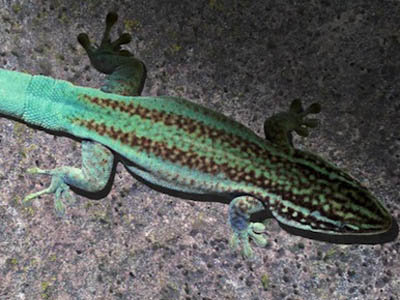
Its color varies from cream green to dark green, a color that is particularly appreciated by collectors.
In addition, dark brown stripes run along their body from head to tail.
Location
This species of Phelsuma is found in four different locations that share a common elevation (over 1600 m):
Andringitra, Ankaratra, Antoetra, Ibity
Note that in these regions the temperature varies considerably between day and night, but also between seasons.
Phelsuma berghofi
Phelsuma berghofi is found in the Atsimo-Atsinanana region endemic in the south of Madagascar. She was brought to Hans-Peter Berghof named
Phelsuma borai
Phelsuma borai is endemic to Madagascar and occurs only in the Bemaraha National Park before.
Phelsuma breviceps
The Phelsuma breviceps is found in the Atsimo-Andrefana Region endemic, visible among others near Tulear.
Phelsuma dorsivittata
Phelsuma dorsivittata is endemic to Madagascar. The species was long considered a subspecies of Phelsumma lineata considered, but was elevated to full species status in 2010.
Phelsuma dubia
Phelsuma dubia is not endemic. It is also present in some African countries. It is probably the least colorful species of the genus Phelsuma.
Phelsuma flavigularis
Phelsuma flavigularis is endemic to Madagascar. It can only be found in Andasibe be found. It is an endangered species.
Phelsuma gouldi
The Phelsuma guldi is in the Haute-Matsiatra region endemic. It was named after the American Paleontologist Stephen Jay Gould named
Phelsuma grandis
Phelsuma grandis is a species that shares Madagascar with the islands of Reunion and Mauritius. In Madagascar it lives only in the north.
Phelsuma guttata
Phelsuma guttata is endemic to the northeast of Madagascar.
Phelsuma hielscheri
Phelsuma hielscheri is endemic to Madagascar. It was found after Michael Hielsher named
Phelsuma hoeschi
The Phelsuma hoeschi is in the Atsinanana region endemic, visible among others in the surroundings of Brickaville.
Phelsuma kely
Phelsuma kely is endemic to Madagascar. It is found in only one place, near a lake called Lake Ampitabe, south of Toamasina.
Phelsuma klemmeri
Phelsuma klemmeri is endemic to Madagascar.
Described as recently as 1991, Phelsuma klemmeri is sometimes called the neon gecko because of its extremely bright colors. It originates from Madagascar, where it occupies a tiny area in the northwest of the island consisting of moist bamboo forests.
It is a small species, reaching 9-10 cm when fully grown.
With its day and tree behavior, this gecko is particularly fast and active.
This slender looking gecko is blue-gray in color, with gray, tawny or turquoise legs and two turquoise side stripes on the top of its back.
A black line runs from the hind legs laterally to the eyes.
The head is greenish-yellow with some black spots. The tail is turquoise gray.
It feeds on small insects and ripe fruit flesh.
Phelsuma kochi
Phelsuma kochi is endemic to northwestern Madagascar, particularly in the Boeny region.
Phelsuma laticauda
The Day Gecko or Phelsuma laticauda is a gecko found on several islands in the Indian Ocean, as well as in French Polynesia and Hawaii.
Phelsuma lineata
Phelsuma lineata is endemic to Madagascar.
It is one of the most represented and can be found almost all over the island.
It occurs in the center, east and northwest, depending on the subspecies.

It is a light green tree gecko with a large red spot in the middle of the back that expands and fades to the back.
He also has a small red spot on his head and a black line on each side.
The tail is lighter, yellowish, sometimes bluish, depending on the individual.
It measures up to 130 mm for the subspecies lineata and up to 100 mm for the subspecies bombetokensis.
This gecko is insectivorous, but also eats fruit and licks the pulp.
It has four subspecies: Phelsuma lineata lineata, Phelsuma lineata bombetokensis, Phelsuma lineata elanthana and Phelsuma lineata punctulata.
Phelsuma madagascariensis
Phelsuma madagascariensis is endemic to Madagascar. It is present along the entire east coast of Madagascar. It has two subspecies: Phelsuma madagascariensis madagascariensis and Phelsuma madagascariensis boehmei.
Phelsuma malamakibo
The Phelsuma malamakibo is an endemic species found in the Andohahela Reserve can encounter. "Malama kibo" means "smooth belly" in Malagasy.
Phelsuma masohoala
The Phelsuma masohoala is endemic to Madagascar. It is only found on the Masoala Peninsula to be found. It is a critically endangered species.
Phelsuma modesta
Phelsuma modesta is endemic to southwestern Madagascar. It has three subspecies: Phelsuma modesta modesta, Phelsuma modesta isakae and Phelsuma modesta leiogaster.
Phelsuma mutabilis
Phelsuma mutabilis is endemic to Madagascar. It is a brown gecko, with a rather massive lighter tail.
Small lighter or darker spots are visible on the back, and a dark line runs from the nose to the neck through the eyes.
Phelsuma parva
The Phelsuma parva is found in the southeastern Coastal region of Madagascar, starting from the Tamatave city, endemic.
Phelsuma pronki
Phelsuma pronki is endemic to the Analamanga region. It is an endangered species which has been studied by my sadly late Friend Olaf Pronk was discovered.
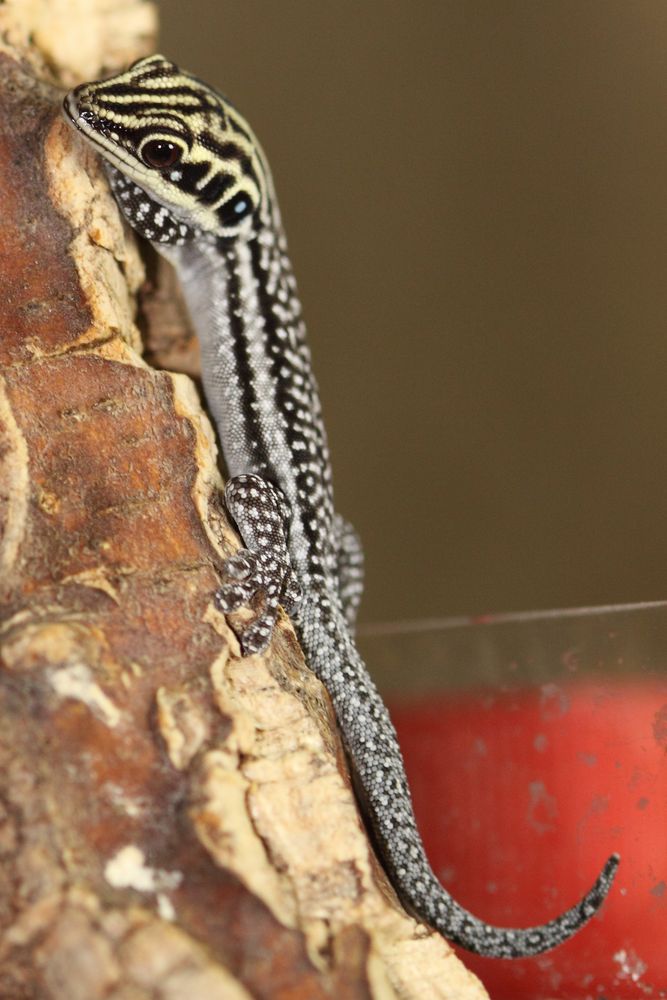
This small day gecko is collected for the international pet trade.
It is evident that this species has become very rare and is experiencing severe population declines.
Combined with pressure from the international pet trade, the species is threatened by severe habitat loss and fragmentation. This is driven by slash-and-burn agriculture and farming practices.
This small-bodied species is restricted to a small area in the center of Madagascar of less than 100 km² and is listed as Critically Endangered on the IUCN Red List.
It is listed in CITES Appendix II, and protected areas need to be established urgently to halt the current loss of habitat throughout the species' range.
Distribution
This species occurs in the central Madagascar highlands in the Andramasina region before.
Habitat and ecology
It is an arboreal (tree-living) species that occurs in moist rainforest. It seems to live mainly on dead trees.
Phelsuma pusilla
The Phelsumenpusille is endemic to Madagascar, the best places to observe it are in the east of Madagascar, especially Perinet, Ambila Lemaitso, Tamatave, Fénérive), Ste. Marie.
It is a green phelsume with a blue tail. It has two subspecies: Phelsuma pusilla pusilla and Phelsuma pusilla hallmanni.
It is a diurnal and arboreal gecko of green color tending to blue at the tail, it has red spots on the lower half of the back and another one in the middle of the forehead.
Phelsuma quadriocellata
Phelsuma quadriocellata is a gecko endemic to Madagascar, living in the humid forests of eastern Madagascar.
It has three subspecies: Phelsuma quadriocellata quadriocellata, Phelsuma quadriocellata bimaculata and Phelsuma quadriocellata lepida.
Phelsuma ravenala
Phelsuma ravenala is a gecko endemic to eastern Madagascar. As the name suggests, it lives mainly on the Ravinala plant or the traveler tree.
Phelsuma roesleri
Phelsuma roesleri is endemic to Madagascar. It lives on the Ankarana Massif, within the special reserve of the same name.
Phelsuma seippi
Phelsuma seippi is endemic and classified as "in danger". It is found in the Diana area.
Phelsuma serraticauda
Phelsuma serraticauda is endemic to the coastal region of northeastern Madagascar. It lives on coconut and banana trees.

The base color is green, pale on the tail and lighter and brighter on the legs.
Three dark red horizontal stripes run across the head.
On the back, at the level of the hind legs, three small longitudinal red stripes are visible. There is also a small yellowish (pale) line along the spine behind the head.
The skin has a rough appearance.
Phelsuma serraticauda feeds mainly on insects, pollen, fruits and nectar.
Phelsuma standingi
The Phelsuma standingi is endemic to Madagascar. It is quite an imposing animal that can grow up to 30 cm long.
Phelsuma vanheygeni
Phelsuma vanheygeni is a gecko endemic to Madagascar, living on the Ampasindava Peninsula in the Diana region.
The genus Uroplatus
The genus Uroplatus, or uroplates, or flat-tailed geckos (this is the etimological meaning of uroplates), are advocates of camouflage and mimicry.
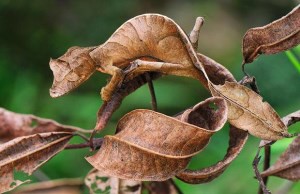
It includes 14 known species and others that are still unknown, according to specialists.
According to their aspects, we can distinguish two types of uroplates, namely those that imitate mosses, tree trunks or bark, and those that imitate dead leaves.
They are all nocturnal, arboreal and insectivorous.
Uroplatus alluaudi
Uroplatus alluaudi is a gecko of the genus Uroplatus, endemic to Madagascar. It is a species classified as near threatened. It is found only in a few localities in the Diana region of northern Madagascar. The Uroplatus alluaudi is very close to the Uroplatus alluaudi and is very often confused with the Uroplatus guentheri confused.

Identification
Alluaudi Uroplatus is the smallest representative of the genus Uroplatus. It has a flattened head and a short serrated tail.
Features
Uroplatus alluaudi is nocturnal, arboreal, and insectivorous. It is almost never found in the field. It is very fast and has a great ability to camouflage.
Locations
The Alluaudi uroplatus lives only in tropical rainforests, including the Amber Mountains, Daraina, Besarika and Marojejy.
Conservations
NP: Amber Mountains, Daraina and Marojejy
Uroplatus ebenaui
The Uroplatus ebenaui or harpoon-tailed gecko is a gecko of the genus Uroplatus, classified as "vulnerable". It is found in the extreme north of Madagascar, in the Diana region and on the island of Nosy-be.
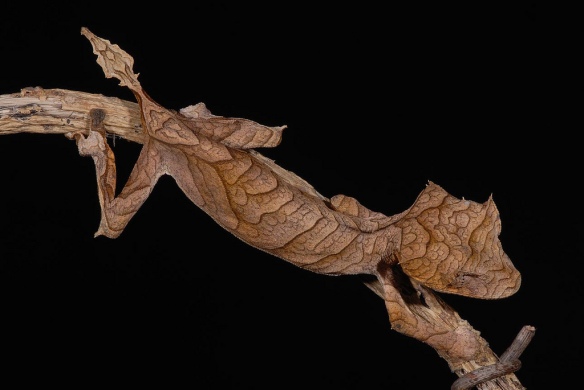
It is also often associated with the Uroplatus phantasticus which differs from him only in the length of the tail (slightly longer).
Features
Uroplatus ebenaui is nocturnal, arboreal and insectivorous. It has a great ability to camouflage itself with its atypical appearance.
In fact, it looks very similar to a dead leaf, of grayish-beige hue with numerous dark spots in the dorsal part and a tendency to orange in the ventral part.
Locations
Uroplatus ebenaui lives only in the tropical rainforests of the extreme north of Madagascar. Its range is limited in the southwest by the Ambanja city and in the southeast by the Special Reserve of Andrafiamena delimited.
Conservations
NP: Amber Mountains, Daraina, Andrafiamena, Lokobe
Uroplatus fimbriatus
The leaf-tailed gecko, Uroplatus fimbriatus is a gecko of the genus Uroplatus. It is found in eastern Madagascar.
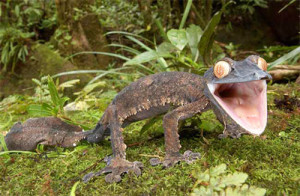
Features
Uroplatus fimbriatus is nocturnal and lives in trees, which it rarely leaves. It can camouflage itself very well and is able to make quite spectacular jumps.
Very close to Uroplatus giganteus the leaf-tailed gecko is one of the largest of the genus Uroplatus, with a length of about 30 cm (including tail). The color is gray-brown, with patterns that imitate tree bark. Its eyes have red-gold stripes.
Locatione
The leaf-tailed gecko lives in the tropical Rainforests in eastern Madagascar. Its range is bounded by the Masoala Peninsula to the north and South Midongy National Park to the south.
Their presence in Andohahela, on the southern tip of Madagascar, is no longer confirmed.
Conservations
RNI: Zahamena
NP: Sud Midongy, Nosy Mangabe, Ranomafana, Mantadia, Zahamena, North Mananara
Uroplatus finiavana
Uroplatus finiavana is a gecko that lives in the Montagne d'Ambre reserve. The word "finiavana" in Malagasy means courage, or more precisely, the ability to go forward or take risks.
Uroplatus giganteus
Uroplatus giganteus lives in the northeast of Madagascar. It comes very close to Uroplatus fimbriatus, but is slightly larger with up to 35 cm.

This species is endemic to the Diana and Sava regions of northern Madagascar.
He comes on the Amber Massif between 750 and 900 m altitude and among others in the National Park Montagne d'Ambre before.
Description
It is a similar type to Uroplatus fimbriatus, but slightly larger.
Mentioned is a specimen with a size of 350 mm, which makes it one of the largest, if not the largest gecko.
It is a nocturnal arboreal species of fairly massive appearance, with very advanced camouflage and barbs around the body that help dissipate shadows when the animal rests in trees.
Classification
This species has long been considered a species with Uroplatus fimbriatus considered. It is now a 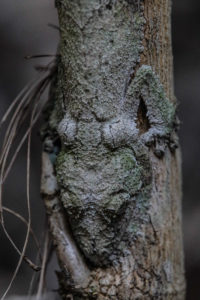
Nutrition
It is an insectivore that preys on prey as it passes within its range or falls on them from branches. Due to its size, it may occasionally consume small birds, mammals or reptiles.
Of quiet temperament, feeds on crickets, cockroaches and other insects to the size of his mouth.
Etymology
Its species name, from Latin gĭgantēus, "giant," was given in reference to its size, making it the largest species of the genus Uroplatus and probably the largest among living geckos.
However, some extinct geckos have exceeded this size, such as Phelsuma gigas with 40 cm, but especially Hoplodactylus delcourti with more than 60 cm.
Uroplatus guentheri
Uroplatus guentheri is a gecko from the west of Madagascar. Another animal that imitates tree trunks very well. It was found after Albert Guenther named
Uroplatus henkeli
Uroplatus henkeli is a gecko that lives in western Madagascar. This species is classified as endangered.
Uroplatus lineatus
Uroplatus lineatus is a gecko that lives in the bamboo forests of eastern Madagascar, protected from the sun from which it seems to flee.
Uroplatus malahelo
Uroplatus malahelo is a gecko that lives in the south of Madagascar, the word "malahelo" means "sad" in Malagasy.

The species is listed as Threatened on the IUCN Red List due to its highly fragmented populations, ongoing habitat loss, and low population size.
It occurs in three protected areas throughout its range and is listed in CITES Appendix II. Control of illegal collection for the pet trade may be required for this species.
Distribution
This species is endemic to southern Madagascar. It occurs in three protected areas, but has a highly fragmented range.
Habitat and ecology
This leaf-tailed gecko rests under tree bark during the day.
It prefers intact moist or transitional forests and is extremely sensitive to habitat disturbance.
Uroplatus malama
Uroplatus malama is a gecko that lives in southeastern Madagascar, around Mount Anosy.

Lacking membranous fringes on lower jaw, neck, body, and limbs.
It is most similar to Uroplatus ebenaui, from which it differs in scaling, coloration, and structure of the hemipenis.
This taxon is distinguished from all other species by the absence of skin spines on the head, body, limbs, and base of the tail.
The species is classified as endangered.
Uroplatus phantasticus
Uroplatus phantasticus (Satanic leaf-tailed gecko) seems to come directly from the fantasy world.
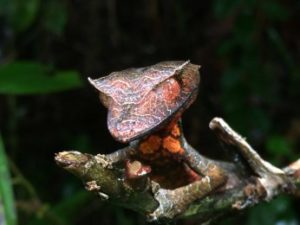
DESCRIPTION, DISTRIBUTION AND BIOLOGY
The Satan's leaf-tailed gecko (Uroplatus phantasticus (Boulenger, 1888) is one of the smallest leaf-tailed geckos.
It has a total length of about 100-110 mm: SVL is 55-70 mm, TL is about 40 mm. The head is not flattened and ends in a rounded snout.
A prominent row of scales in the interorbital and occipital regions forms a V-tip on the neck.
The body is laterally compressed, making these animals a perfect example of phytomimicry even within the genus Uroplatus.

These geckos don't have eyelids, just a translucent coating on their eyes, so they use long, moving tongues to wipe dust or dirt from their eyes.
Individuals with heterochromia (different coloration of the eyes) are most valuable for terrarium collections, as are individuals with unusual patterns and spots on the body.
Their tails imitate the shape of a leaf. Sometimes you can find the "giant" U. phantasticus in reptile collections worldwide. It is very likely that they belong to a new species discovered in 2019 -. Uroplatus finaritra.
The latter has a pink or red throat , while the true U. phantasticus has a black throat with orange corners of the mouth.
Still found among wild-caught animals from Madagascar are large specimens of U. phantasticus that look as large as U. finaritra, but have a black throat with pink or orange corners of the mouth.
It may be another new species that has not yet been officially discovered and described.
Uroplatus pietschmanni
Uroplatus pietschmanni is a gecko classified as endangered. Uroplatus pietschmanni is a particularly impressive leaf-tailed gecko, which together with its rarity (discovered in 2004) makes it a highly sought-after specimen by collectors.

Distribution
This species occurs in Fierenana, Ambatovy and Analamay, Madagascar, at an altitude of 900-1,200 meters above sea level.
Habitat and ecology
This species lives in the canopy of the forest at low population density.
They are exclusively nocturnal and spend most daylight hours lying on tree trunks.
It is endemic to the Alaotra-Mangoro region.
Uroplatus sameiti
Uroplatus sameiti is also very strong in the art of mimicry. It looks more like a tree lichen than an animal and is therefore very difficult to spot.

It is endemic in locally and occurs at altitude, which means that the temperature during the day should not exceed 26 °. Lowering the temperature at night is essential.
It has a quiet temperament and feeds on crickets, cockroaches and other insects up to the size of its mouth.
Uroplatus sikorae
Natural distribution and habitat :
This species, endemic to Madagascar, inhabits mainly the humid forests in the east of the island.
Description: The nominated subspecies (Uroplatus sikorae sikorae ) iOn which the following description is based.
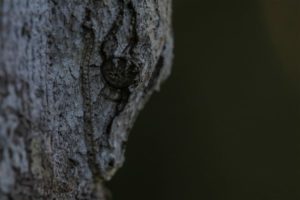
It is a nocturnal gecko, with a big head and big fingers. The eyes are golden and the pupil is vertical. The back is slightly arched.
A lace-like fold of skin forms a fringe under the lower jaw, along the lower flanks, along the edge of the legs and tail.
These fringes reduce any shading around the animal as it rests motionless on a lichen-covered branch.
I have seen 2 different types of coloring in this subspecies. The first perfectly imitates a lichen-covered bark, including the texture.
It consists of brown, white, gray, green, steel, yellow and red or orange, sometimes spotted with black dots. The second also mimics the bark of a tree, this time smoother and without lichens.
The base color is usually various shades of brown and is complemented by a darker, textured longitudinal pattern on the back surface that further resembles tree bark.
In both cases, the camouflage is perfect on a well-chosen branch.
OTHER IGUANAS
Two endemic genera: Chalarodon and Oplurus.

Chalarodon madagascariensis
Habitat: Chalarodon madagascariensis is a terrestrial species commonly observed on the sandy soils of forested or scrubby areas in the subarid to semiarid southern and western regions of Madagascar.
The six Oplurus species live on trees or rocks.
Iguanids are widespread in the Americas; there is no current species in Africa or Asia, and fossil remains have never been found there.
Their presence in Madagascar is a biogeographical mystery.
They managed to colonize this island from Antarctica before it assumed a position that turned it into an inhospitable ice cap.

